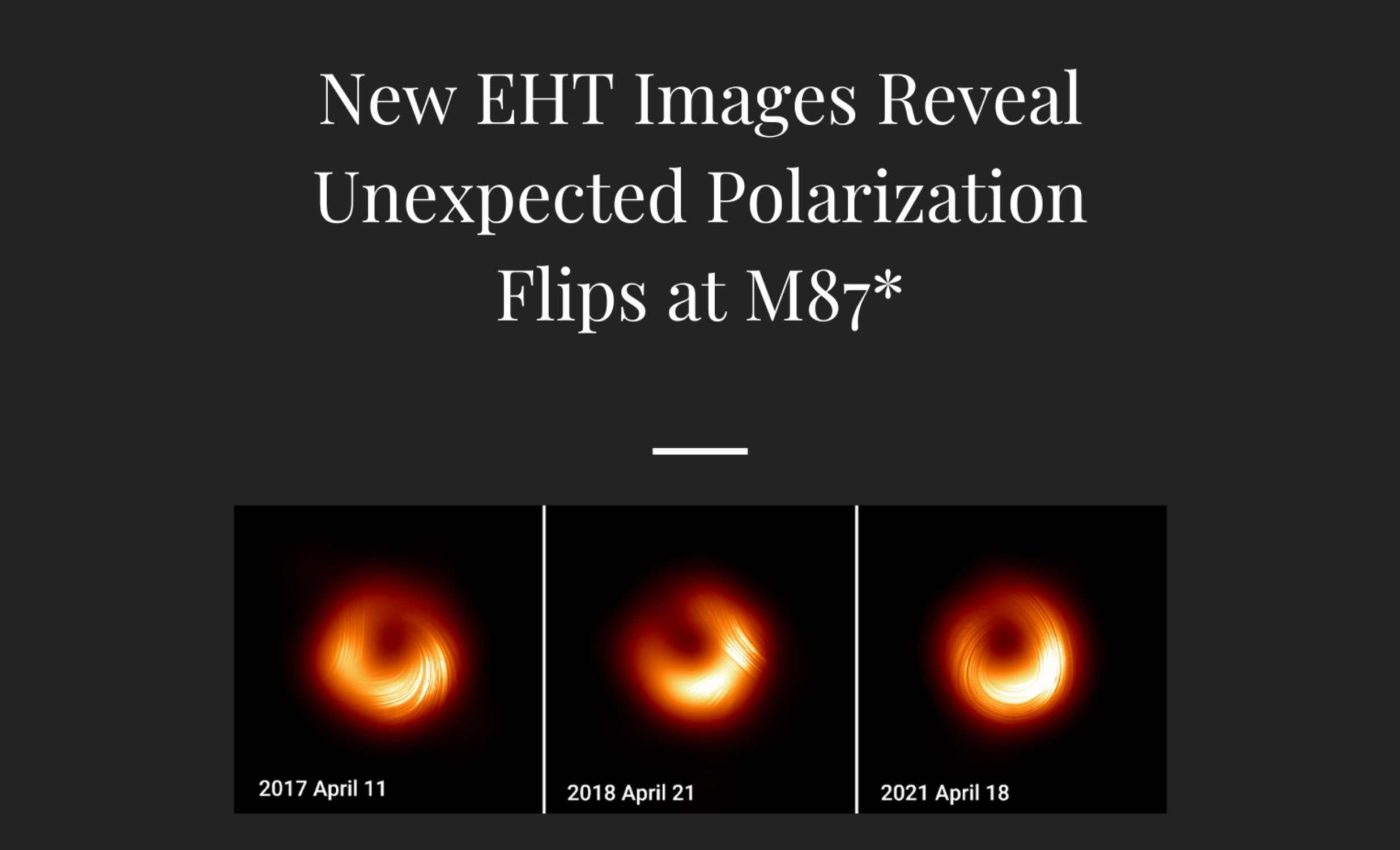
First black hole ever photographed has changed and astronomers don't know why
New images from the Event Horizon Telescope show that the polarization pattern around M87* – the first black hole ever photographed – has changed, flipping direction over just four years.
The result, captured by a planet-scale network of radio telescopes, hints at shifting magnetic fields and a restless flow of gas near the event horizon.
The work was led by the Event Horizon Telescope Collaboration (EHT), a global team operating a planet-scale radio array. Its researchers focus on black hole imaging and horizon-scale magnetism.
M87* magnetic changes
At this scale, the bright ring encircles the event horizon, the no-return boundary around a black hole. Changes in polarization reveal shifts in the magnetic field geometry that guide infalling gas.
Polarization ran one way in 2017, settled in 2018, then reversed in 2021. That pattern suggests a turbulent accretion flow, with gas spiraling inward under gravity.
Another possibility is Faraday rotation, the rotation of light’s polarization by magnetized material along our view. That effect can mimic a flip if the foreground changes.
Real meaning behind the flip
Magnetic fields do more than decorate the image. They steer charged particles and can feed or throttle the flow of matter onto the black hole.
The data now constrain faint radio emission near the base of M87*’s relativistic jet, a narrow beam of near-light-speed particles. Finding that base helps connect the ring to energy that the jet carries into the galaxy.
“The fact that the polarization pattern flipped direction from 2017 to 2021 was totally unexpected,” said Jongho Park, a researcher at Kyung Hee University (KHU) and a member of the project.
The flip also hints at changes in the direction of the electric field tied to the radiation. That direction traces how fields thread the plasma near the shadow.
Clearer view of M87*
In 2021, the array grew with Kitt Peak in Arizona and NOEMA in France. That boost raised sensitivity and sharpened the final image.
This experiment used very long baseline interferometry, a method that links distant radio telescopes into one. The technique lets scientists resolve features as small as the bright ring around M87*.
More stations add more pairs of antennas, which capture finer details and reduce uncertainty. With the stronger 2021 coverage, the array also set limits on faint features just outside the ring.
The ring size stayed steady across the years even as the polarization changed. That steadiness backs a stable gravitational shadow while the plasma shifts above it.
The bigger black hole story
Back in 2019, the same team released the first results. That picture showed a bright ring and a dark center, features predicted by general relativity.
Since then, follow-up imaging has mapped magnetic fields at the edge of M87*. The new flip shows that those fields can reorganize on human timescales.
One leading idea invokes a magnetically arrested disk, a strongly magnetized flow that can choke, then release, gas. That kind of stop-and-go behavior can seed variability like this flip.
Jets matter for galaxies too. Over time, they can heat and stir gas far beyond the black hole and bend the path of star formation.
The next steps are clear. Higher-frequency campaigns and added stations could turn yearly snapshots into a short sequence that traces cause and effect.
That should test whether the flip repeats or comes from a transient change in the foreground. It should also check how the jet base brightens or fades as the ring rearranges.
Lessons from M87*
The simplest explanation is a change in the near-horizon field geometry. A shift in which side of the ring dominates could reverse the observed pattern.
Another path involves a Faraday screen, magnetized gas between us and the ring. If its properties evolve, it can rotate the polarization and make a flip appear.
A third option is changing synchrotron emission, light from fast electrons in magnetic fields. If different parts of the flow brighten or fade, the ring polarization can change direction.
Each scenario has a different fingerprint in time and frequency. That is why the team plans to expand to higher observing bands and denser schedules.
On these images, short ticks trace the electric vector position angle, the direction of the electric field in the observed light. When those ticks switch their swirl, it marks a change in field geometry at the source.
Teams also stress reliability checks. They rebuild images with independent algorithms and compare them to synthetic data so that shared structures remain and artifacts fall away.
The article is published in Astronomy & Astrophysics.
—–
Like what you read? Subscribe to our newsletter for engaging articles, exclusive content, and the latest updates.
Check us out on EarthSnap, a free app brought to you by Eric Ralls and Earth.com.
—–













